Blog Post 1: Ed Tech Trends

As the year comes to a close, and with virtual learning still going strong, technology within the classroom is more prominent than ever. Kyle Byers writes about the top ed tech trends of the year and how they help in the classroom. You can check out his article here: https://explodingtopics.com/blog/edtech-trends
He writes about different trends on the rise such as VR and online homeschooling. He even mentions how e-learning has become prominent in colleges as they offer online programs as well.
Now with students online, these trends have become more accessible to students around the world. They can participate in school from home with the use of zoom and other video chat mediums, elevating these levels of e-learning.
Using VR in the classroom is also on the rise, especially with STEM classes being adapted into curriculum. Byers even mentions how VR can help students with disabilities by giving them scenarios that they will experience in the real world.
Read more about it here:
https://www.reuters.com/article/us-health-autism/how-vr-helps-kids-with-autism-make-sense-of-real-world-idUSKBN1ZL1JS
Becoming Changemakers
After going through the We teachers resources on the WE wesbite: https://weschools.we.org/we-teachers , I found a lot of interesting content that can be applied to the classroom. The first module I wanted to look at was the Mental Well-Being module.

As I am doing observations in a middle school, it has come to the attention of all of the teachers on my team that both the students and teachers need to address mental health more. Teachers are experiencing some pretty bad burnout, and the students are struggling more than ever. They are also at an age where they are going through so many changes, and not having social interaction in school for about a year beforehand has greatly affected them. I thought going through this module would be beneficial to aide the situation in the classroom.
I really liked the way this module was set up into the different sections. It made navigating it much easier. I also really liked how they had a very in depth section on the mental health for teachers. Addressing such an issue brings light to the fact that teachers are struggling. And if teachers are struggling, they are not putting their best work forward for the students, causing a chain reaction
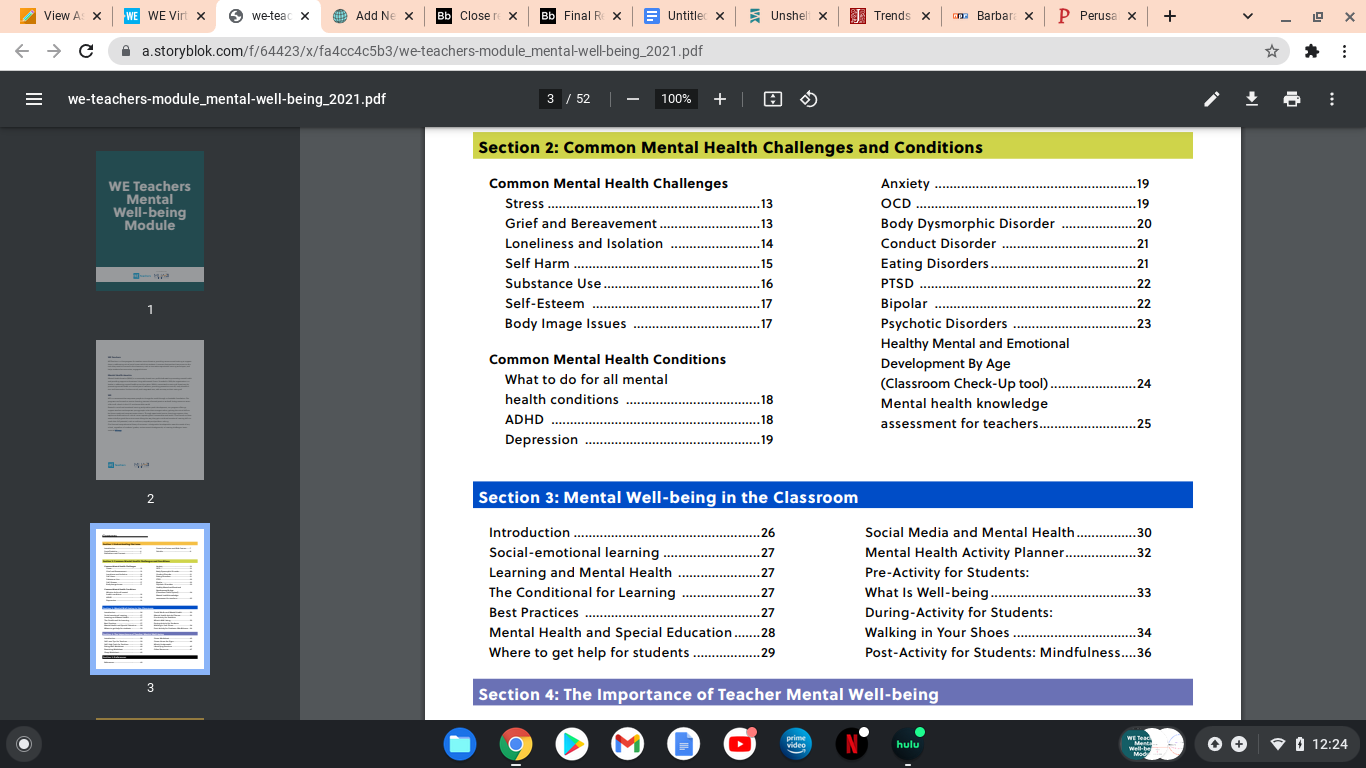
I highly suggest looking at this module:
https://a.storyblok.com/f/64423/x/fa4cc4c5b3/we-teachers-module_mental-well-being_2021.pdf
Watching Parasite
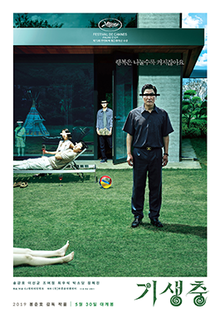
In 2019, Parasite became the first non-English movie to win the Academy Award for best picture. This was always a movie I have enjoyed so I was eager to watch it again as I have not seen it in quite some time. I watched on Hulu: https://www.hulu.com/movie/parasite-2fd691a0-f66b-467f-8635-00d7f151f3d4.
I didn’t notice any huge differences that stuck out in setting. It felt as if there was no difference than any other major city. The weather was consistently grey, and even had a storm take place. I feel as though that helped drive the plot and set the tone. At first, the characters struck me as not much different than anyone else, but as the plot continued, I found out I was wildly incorrect. The plot takes a very interesting turn as different character conflicts are revealed.
Some cultural differences I noticed at first were the food and the money. Obviously, when taking place in a different country, that country’s form of currency is going to be used. The food and brands used are typical of Korean culture: rice, kimchi, etc.
There were also some similarities as well. The movie portrays different social classes and how they interact with each other. The upper class family seems no different than any other upper class family. They hire people to help around the house and help the family. The lower class family also comes across as a typical lower class family: minimum wage jobs, trying to make ends meet, etc. If it weren’t for the dramatic plot with its twists and turns, I’d say this movie is very similar to that of other cultures.
VR in Classrooms
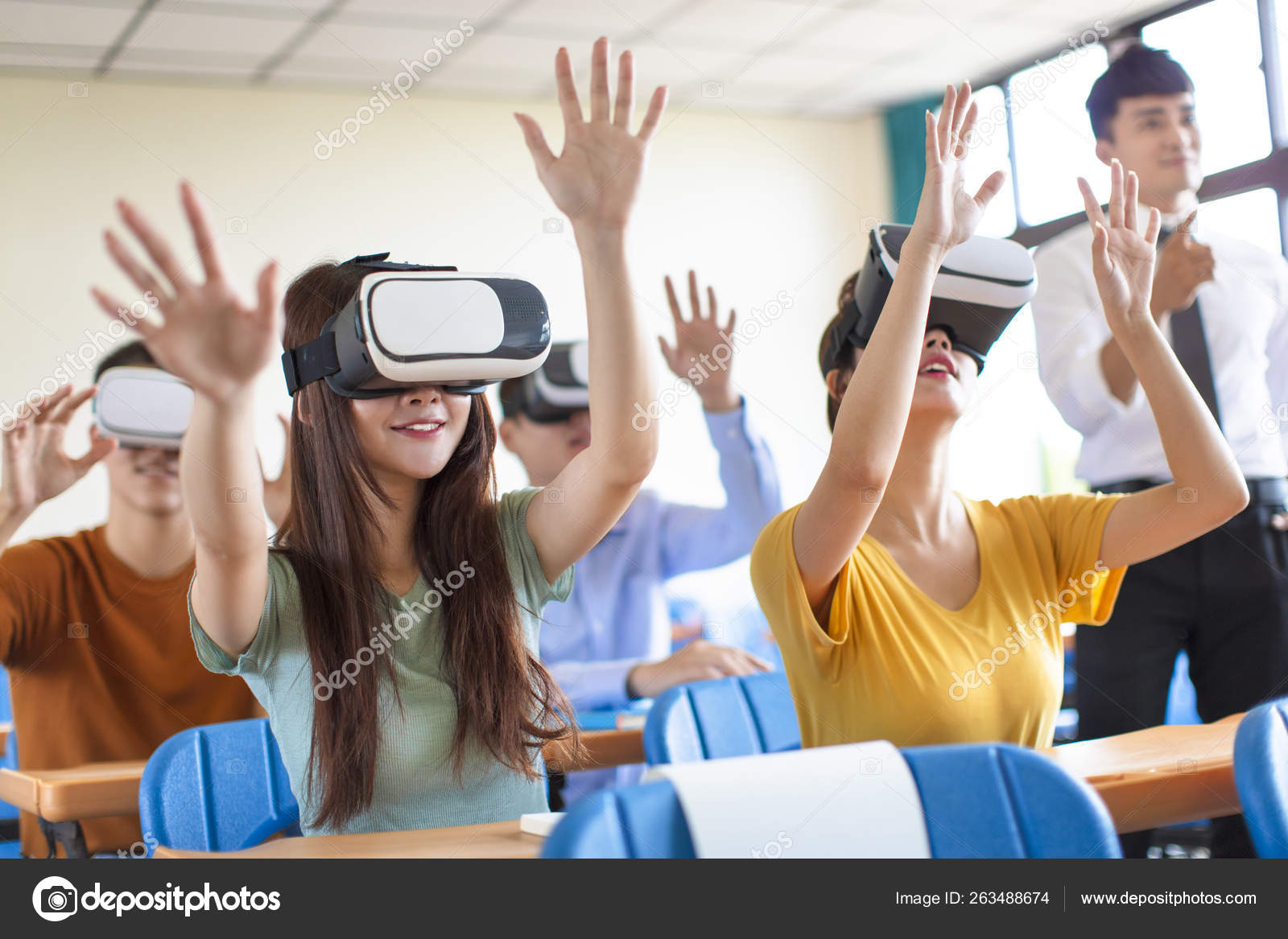
The use of virtual reality, or VR, in classrooms has become more and more common. It gives students the opportunity to broaden their experiences and look at the world around them through a different lens other than images online.
Google Cardboard is a fantastic option to use in the classroom. Viewers are decently priced, and you can find ones that hook up to any device in the classroom.
By downloading the Google Cardboard app, you can access Google Earth to take your students on trips around the world! A fun idea for a literature classroom is to have your students participate in a Google Lit Trip. Take your students to significant places in their stories. It’ll help them imagine that they are in the story themselves.
Be sure to check out this link for more ideas on incorporating Google Earth and VR in the classroom:
Out of Eden Walk
Exploring the trail of the Out of Eden Walk was quite interesting. I wanted to start by looking where the walk started: Africa.

More specifically, I looked at Ethiopia. I was unaware that it was the home of one of the oldest human fossils. Reading the first post that sets up the goal and timeline of the walk felt like a good place to start. It gave a lot of background information, as well as descriptive language about the animals and sounds heard in Ethiopia.
I then moved on to “Holy Lands.” I wanted to take a closer look at the post called “Shore Lines.” I thought it was incredibly interesting to learn about brine pools. I had never heard of a brine pool before reading this post, and hearing about the make up and contents of a brine pool was very educating.
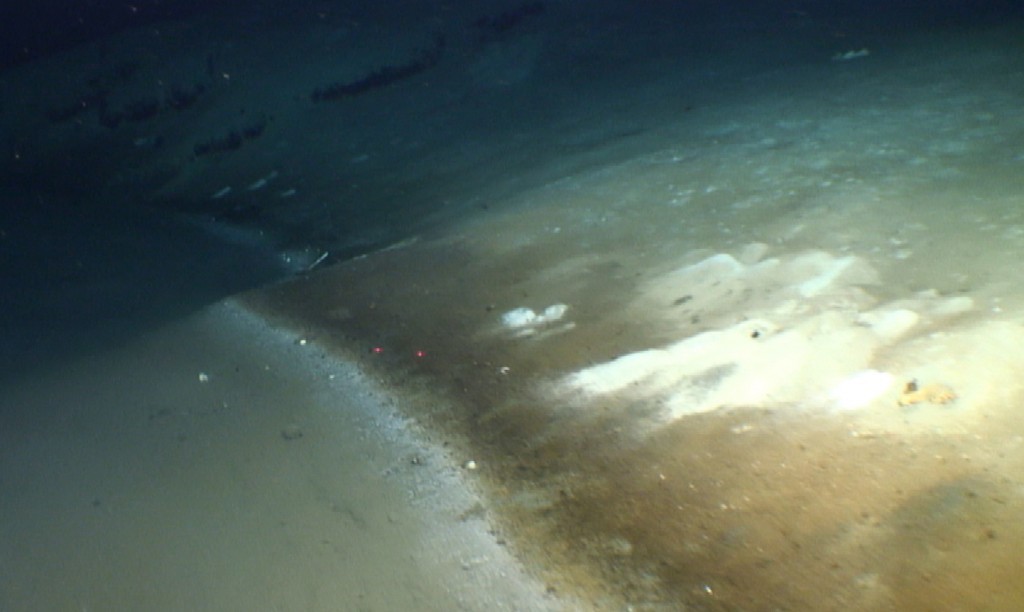
I then moved on to read “Treasure Island.” Truthfully, I picked out that post because I had read the novel Treasure Island when I was younger, so the name stuck out to me. I knew very little about the island of Cyprus, and was excited to learn more about it. I had no idea it was one of the oldest inhabited islands on the planet! I especially liked the one part where it said that “For 150 kilometers I am the only thing that moves on foot. Such is the inward loneliness of Europe.” It seems eerily peaceful to me.
I plan on going through the rest of the walk to learn more about these different places & learn about the experiences.
Feel free to check them out as well :
https://www.nationalgeographic.org/projects/out-of-eden-walk/#section-2
HyperDocs

HyperDocs have become more widely used within classrooms, as now often times students consistently have access to technology such as Chromebooks. More recently, due to online and distance learning, educators around the world have been utilizing these HyperDocs to keep students engaged with each other outside of the classroom. This adds a more collaborative approach in the classroom to stray away from the typical lecture.
I had come across this super interesting HyperDoc for ELA classrooms! It is an interactive Google Slides to get students to tell memoirs in six words! It contains videos, conversation points, and utilizes Canva for the closure of the lesson. You can check it out at the link below!
https://docs.google.com/presentation/d/1kAHo16Kt0JF0mrVzmXHgzrqW9bTQDTrvLoKBfJJe43c/edit?usp=sharing
You can also find more information on the creation of HyperDocs, as well as ideas at this website as well!
https://ditchthattextbook.com/the-hyperdocs-toolbox-14-engaging-example-activities/
A Trip to the Smithsonian

For my virtual field trip, I decided to look at the Smithsonian National Museum of Natural History. I had gone to the museum during my 8th grade field trip to Washington DC, but didn’t remember much about it. Immediately I was drawn to a temporary exhibit called Critical Distance. It takes its visitors through a holographic pod of orcas to see the challenges these endangered whales face.
I also then looked at the Ancient Egypt exhibit. Growing up, I loved learning about ancient Egypt and vaugely remember loving experiencing that exhibit during my first experience at the Smithsonian.
I then came across a newly added “Mega-toothed shark” which was hung on display in 2019. This shark, commonly known as the Megalodon hangs in the dining area of the museum. The picture on the website is amazing, and I would love to see it in person!
The final exhibit I was drawn to was the Sant Ocean Hall. The website shows a massive preserved squid, as well as a jaw of the megalodon. I have also always been interested in marine life and love the ocean! Seeing all of these exhibits in real time is a thrilling experience.
Check out the rest of the exhibits at this link! https://naturalhistory.si.edu/exhibits
Thanks for reading!
Sail the 7 Cs: Immersive Reader
In this chapter, I learned about a program called Immersive Reader. The program is an add-on to the computer that helps accessibility to reading on the computer. According to the textbook, some of the features it includes are adjusting font size and color, picture dictionary, translation tool, and parts of speech highlighter.

This tool is so important for teachers who want to create an inclusive learning environment. This tool can help those who are hearing impaired, those with dyslexia, those with language barriers, and those who just need a little extra assistance with their reading comprehension. And while it is important for those who need such accommodations, the textbook notes that it’s important for all people to have access to in general. It is a tool that can benefit everyone!
As a future ELA teacher, I plan on implementing this tool in my classroom for all students to utilize to help further their reading comprehension.
Be sure to check out this video on the Immersive Reader!
Quality Education in The World’s Largest Lesson
In last week’s blog post, I had talked about The World’s Largest Lesson and SDGs. This week, I’d like to specifically look at Goal 4: Quality Education. When looking at it on the website, it is introduced as a goal to “Ensure inclusive and equitable quality education and promote lifelong learning opportunities for all.” The website also provides additional resources. Specifically, a resource was given on why so many children still aren’t in school.
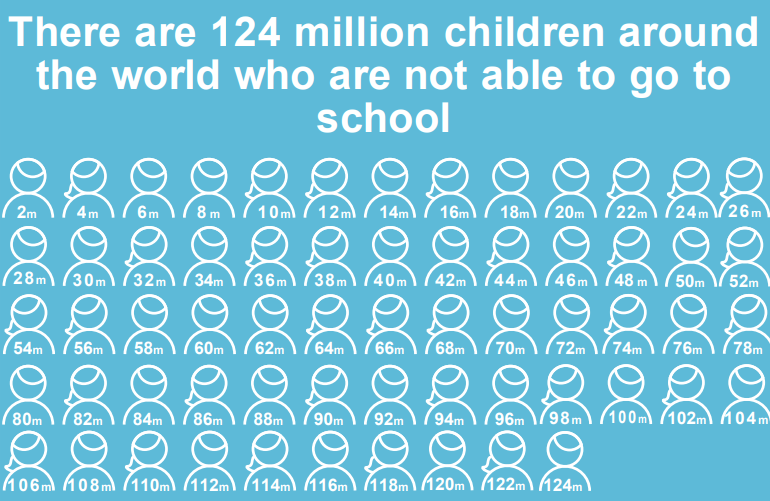
This resource gives insight as to why so many children aren’t in school: child labor, child marriage, discrimination, and other conflict. Introducing these issues to students through The World’s Largest Lesson, it gives them a better understanding on what is happening and how they can learn and help change it.
Be sure to check out UNESCO’s video on quality education as well!
For more information, be sure to check out the following links:
https://en.unesco.org/news/what-you-need-know-about-right-education
The World’s Largest Lesson

Introducing “The Worlds Largest Lesson”: a campaign paired with Unicef that promotes the use of SDGs, or Sustainable Development Goals, in the classroom. According to their website, they “produce creative tools for educators and action focused learning experiences for children and young people that build skills and motivation to take action.” (https://worldslargestlesson.globalgoals.org/about-us/). Check out this brief video they provide to learn all about them!
I had learned about this tool in a class in a previous semester, and have also participated in it. I think it is has an incredibly important goal and should be implemented in schools all over the world. It is a wonderful tool to introduce important topics that affect people all over the world, such as poverty, climate change, and gender inequality. Introducing such controversial and important topics in schools gets students really thinking, and gets them involved in something bigger than themselves. It gives students a sense of doing something important in school other than the basic common core and state standards for learning.
I would implement this in my classroom starting in the first week of school. As a future ELA teacher, I would relate each of the topics to a story we will be reading in class. For example, when learning about poverty, I would choose an age appropriate book that wrestles the topic of poverty to introduce and transition into the Largest Lesson.
Thanks for reading this weeks blog post!
Mackenzie Hickey
Recent Comments